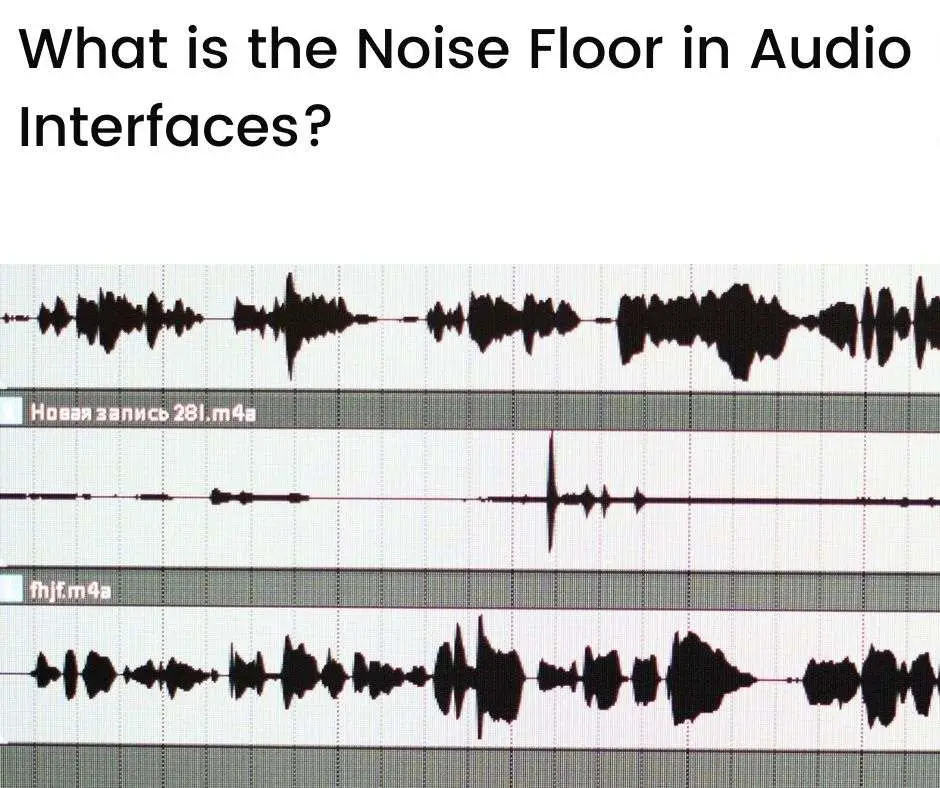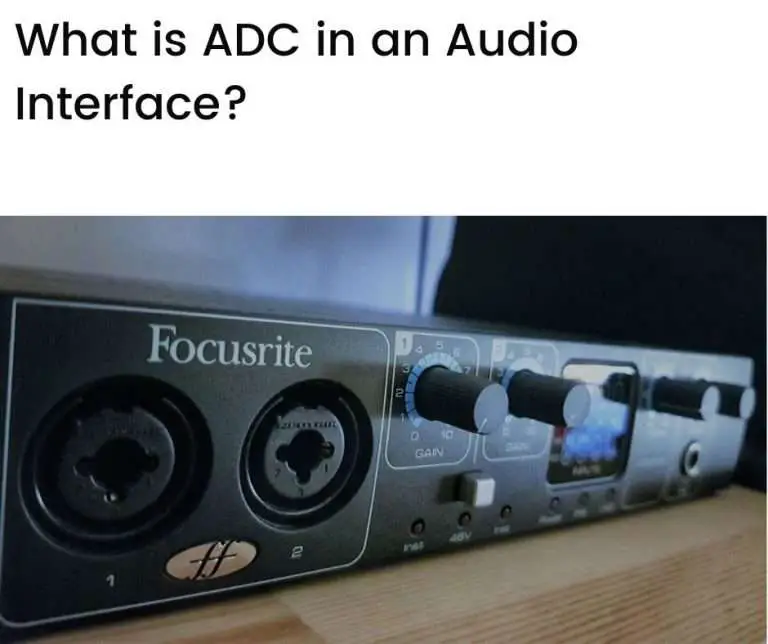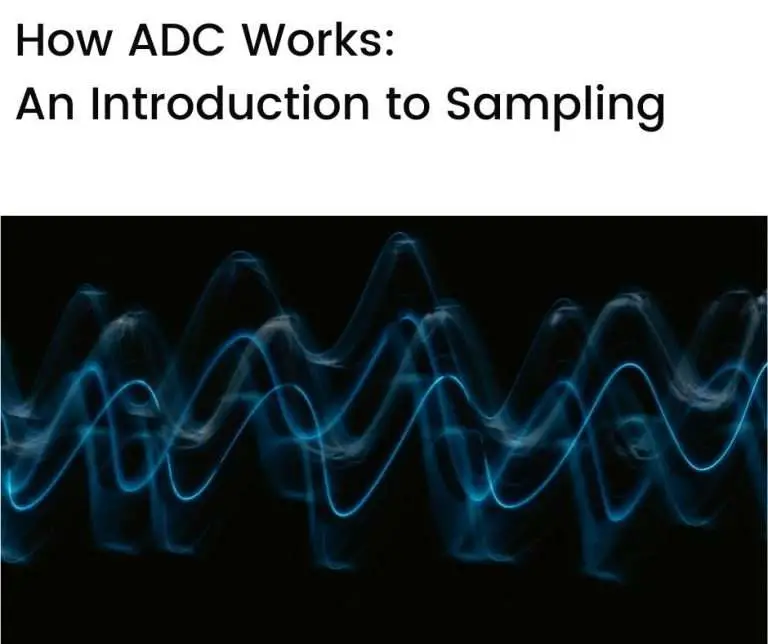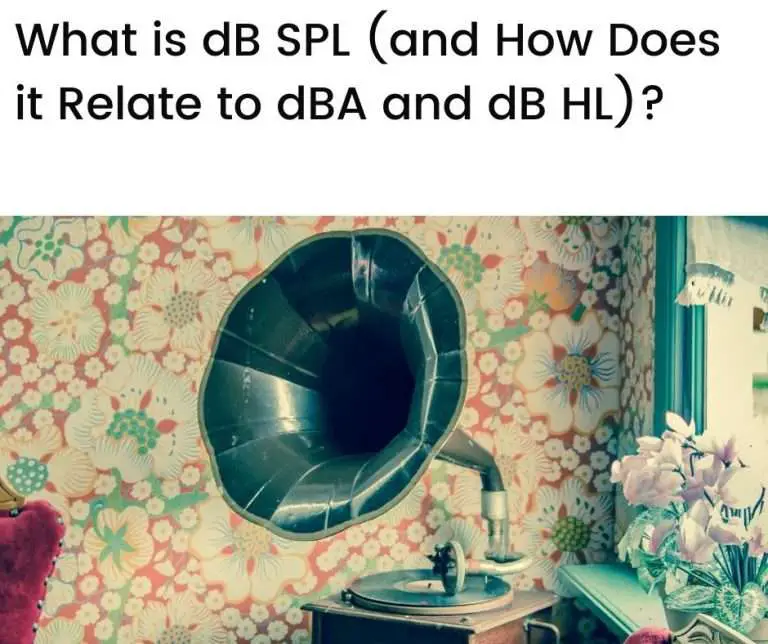The noise floor of an audio system is the minimum amount of noise that exists when there’s no signal present. In audio interfaces, the noise floor is primarily caused by the analog-to-digital (ADC) conversion process, the microphone pre-amps, and the inherent noise generated by electronic circuitry. The noise floor is an important factor in audio interfaces as it determines the dynamic range—the higher the dynamic range, the lower the noise floor, and the better the overall quality of sound produced.
In this article we’ll look at:
- What is the noise floor in audio?
- What determines the noise floor in audio interfaces?
- Why the noise floor matters
- What is an acceptable level of noise floor in audio interfaces?
- Conclusion
What is the noise floor in audio?
In an audio system, there will always be some level of noise. The minimum amount of noise that exists in the system when there’s no signal present is called its noise floor (a.k.a., ‘floor noise’).
And, generally speaking, the lower the noise floor, the better.
In an audio recording environment, there may be many sources of noise. These generally fall into two categories:
- Internally generated noise due to the components of the audio workflow
- Externally generated noise caused by disturbances in the recording environment
Audio workflows are filled with electronic equipment. And all electronic equipment generates an inherent level of noise. This is what causes internally generated noise in an audio workflow.
Externally generated noise is caused by factors outside of the workflow components, such as electromagnetic interference, external disturbances, or other stray noises.
While you can generally try to control for external noises—soundproofing, maintaining a quiet recording environment, careful placement of electronic equipment, and using only balanced cables and mics to minimize interference—there’s little that you can do about internally generated noise in electronic devices.
Internally generated noise is caused by the physical properties of electronic devices, and it’s this type of noise that usually determines the noise floor of a system or a device.
And there may be many sources of internally generated noise—the noise floor of an audio system is the sum of all these sources of noise.
So, in the audio production process, the noise floor of an audio recording is the sum of all the noise floors encountered during the recording process.
Below is a helpful video from Audible ACX that introduces the noise floor.
Coming from Audible (an audiobook producer), the video’s focus is on voice recording. But the concepts apply to any audio recording.
There are even some suggestions on how to reduce the noise floor during recording, or with the help of a digital audio workstation (DAW).
What determines the noise floor in audio interfaces?
Audio interfaces are at the heart of most digital audio workflows and they serve some important functions, including:
- Providing inputs for several components, and offering a connection pathway to a computer system
- Providing outputs for hearing audio through connected speaker systems or headphones
- Converting analog audio signals to digital signals (analog-to-digital conversion or ADC), and digital audio signals back to analog (digital-to-analog conversion or DAC)
- Providing pre-amplifiers for microphones, and including balanced inputs for condenser microphones
All of these functions contribute to the inherent levels of noise that audio interfaces produce.
And, like most other components in an audio workflow, audio interfaces are made up of electronic circuitry—this adds further levels of inherent noise (more on this later).
An audio interface’s noise floor will be determined by the total contribution of all of these sources of noise.
So, to better understand what causes the noise floor in audio interfaces, let’s take a closer look at the most important sources of noise in interfaces.
ADC processing
ADC is a complex process that converts analog audio signals to a digital form by using periodic sampling.
This sampling generates measurements of signal amplitude that are recorded using binary numbers, and the precision level of these numbers—known as the bit depth—generates a type of noise known as quantization noise.
The bit depth is simply the number of bits used for recording sampling measurements. The quantization noise increases as the bit depth decreases.
Using 16-bit ADC, for instance, a noise level of 0.0015% can be generated, whereas using 24 bits (a higher bit depth) reduces this to less than 0.00001%.
Fortunately, the quantization noise is quite small in most modern audio interfaces as a high enough bit depth (ie. 24 bits or more) is usually used. However, it still adds to the level of noise produced by an interface and hence it adds to the noise floor.
Pre-amps
Most audio interfaces include pre-amps to use with connected microphones. These pre-amps generate inherent noise.
Pre-amps are particularly responsible for adding to an audio interface’s noise floor as they use high levels of gain (60-80 dB or more) on incoming microphone signals—with these levels of gain, even a small amount of noise can get amplified to levels that can detract from audio quality.
Given the importance of pre-amps when it comes to noise levels, they have their own standard for measuring noise known as equivalent input noise or EIN.
The EIN is essentially a measurement convention for making like-for-like noise comparisons between pre-amps with different gain characteristics.
Having good quality pre-amps matters in an audio interface—the noise generated by these can vary from 1 dB to around 6 dB depending on the choice of pre-amp.
Electronic circuit noise
All electronic circuits generate noise.
This type of noise arises due to the physical properties that make up circuitry and the nature of flowing electric charges.
The main kinds of electronic circuit noise are:
- Johnson noise—related to the thermal properties of electronic materials
- Shot noise—arises due to the way in which electric charges fluctuate when flowing through circuits
- Flicker noise—caused by the variation in resistive properties of electronic circuits
- Burst noise—due to irregularities in the semiconductor manufacturing process (this is less of an issue nowadays given improved manufacturing techniques)
Electronic circuit noise is largely unavoidable and is present in all electronic circuitry (not only audio interfaces).
Why the noise floor matters
The noise floor matters for two main reasons:
- All else equal, less noise in an audio system is better than more noise
- The noise floor determines the dynamic range of an audio system or device
The first reason above is self-explanatory—all else equal, the lower the noise floor, the better.
The second reason refers to the amount of scope that a system has for accommodating louder sounds relative to softer sounds without experiencing distortion. This can be an important factor in overall sound quality.
Technically, the dynamic range is measured (in dB) as the ratio of the loudest sound that a system can produce (without distortion) relative to its softest sound, ie. relative to its noise floor.
So, the lower the noise floor, the larger the dynamic range.
The dynamic range can have a big impact on how an audio production sounds—more detailed transients, punchier attacks, clearer decays and silences, and a greater sense of “audio drama” are all possible when there’s a larger dynamic range to work with.
The noise floor, therefore, plays an important role in determining sound quality.
What is an acceptable level of noise floor in audio interfaces?
We’ve just seen how the dynamic range is related to the noise floor, and how they both play a role in overall sound quality.
Another way of understanding the level of noise floor that’s acceptable in an audio interface is to consider the level of dynamic range that’s acceptable for the interface.
In digital audio systems, there’s a certain minimum amount of noise that’s generated by the sampling process—this is the quantization noise that we discussed earlier.
As it happens, there’s a theoretical relationship between the bit depth and the maximum dynamic range that’s possible for a digital system (which corresponds to a minimum noise floor that’s possible). This translates to approximately 6 times the bit depth in dB.
For a bit depth of 16 bits, for instance, the maximum dynamic range that’s possible is approximately 96 dB (=6×16 dB). And, for a bit depth of 24 bits, the maximum dynamic range is approximately 144 dB (=6×24 dB).
But these are the maximum possible levels of dynamic range—in practice, the dynamic range will be less than these levels due to the other sources of noise that we’ve discussed, eg. pre-amp noise and electronic circuit noise.
So, what levels of dynamic range are acceptable for an audio interface?
To answer this question, let’s first consider the dynamic range that’s typical for different kinds of music.
According to a 2016 research study into different musical styles, the dynamic range varied from around 13-23 dB for jazz, to 20-32 dB for classical music.
Now, let’s consider what human ears are capable of hearing.
The dynamic range of human hearing is considered to be around 120 dB (with 130 dB considered to be the pain threshold). But, in practice, a dynamic range above 90 dB may be harmful to a person’s ears.
So, humans are capable of hearing the full dynamic range that’s produced by a variety of musical styles. And anything over 90 dB may be unnecessary.
Translating this to an audio interface, the first thing to consider is the bit depth of the ADC process.
With a bit depth of 16 bits, we know that the maximum possible dynamic range is 96 dB. And, in practice, the dynamic range of a 16-bit audio interface will be several dB lower than this due to other sources of noise (that raise the noise floor).
Nowadays, many interfaces offer 24-bit ADC (or higher), resulting in a maximum dynamic range of 144 dB (or better).
After taking account of the other sources of noise in an audio interface, however, the dynamic range of 24-bit audio interfaces varies from around 115 dB to 120 dB depending on the quality of the interface.
But if humans can’t hear much beyond 90 dB, why would we want an interface with a dynamic range of up to 120 dB?
The reason is that an audio interface is only one component of an audio workflow. And we know that all the components in an audio workflow will add to the noise floor, lowering the dynamic range of the system.
With a dynamic range of at least 115 dB, there’s enough scope for other components to add to the noise floor and still result in a high enough dynamic range for the whole production process.
So, all considered, an acceptable level of dynamic range for an audio interface is around 115 dB or better.
Higher quality interfaces may produce dynamic ranges of up to 120 dB or higher, however, so you may wish to opt for these depending on your audio quality needs.
Whatever your choice, it’s worth remembering that, all else equal, the higher the dynamic range the better. Which is another way of saying, the lower the noise floor in an audio interface, the better.
Conclusion
The minimum amount of noise that exists in an audio system when there’s no signal present is called its noise floor.
In an audio interface, the noise floor is generated by its ADC processing, its microphone pre-amps, and the inherent noise produced by the electronic circuitry that makes it up.
The noise floor is an important factor in audio production as it determines the dynamic range.
The lower the noise floor, the higher the dynamic range. And the higher the dynamic range, the better the overall quality of sound produced.
To understand the level of noise floor that’s considered acceptable in an audio interface, it’s helpful to think in terms of the dynamic range. In modern audio interfaces that use 24-bit ADC processing or higher, dynamic ranges of 115 dB or better are available.
Human hearing is considered to have a practical dynamic range of around 90 dB (without causing hearing damage).
So, an audio interface with a dynamic range of 115 dB may be considered to have an acceptable level of noise floor. This is because 115 dB allows enough scope for additional noise from other components in an audio workflow—all of these sources of noise will add to the noise floor of the audio production.







